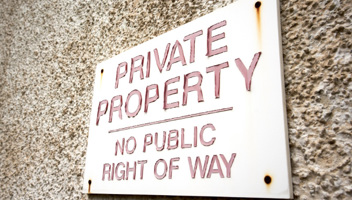As reality bites and we all get used to a new way of living and working in the time of COVID-19, we have all seen plenty of articles and blogs concerning the key points of consideration in leases – but what about the documents which sit alongside the lease itself?
The following points are worthy of consideration alongside any analysis of a lease:
Deposit Agreement
In a time where many tenants are looking to either be excused from paying rent, or are seeking a reduction or an abatement from it, a deposit is a ray of sunshine for any landlord. As a general rule, a landlord can automatically draw upon the deposit in the absence of rent being paid by the tenant, meaning that if the tenant cannot or does not pay rent (or any other sum) as they are supposed to under the lease, that the landlord is not left out of pocket. Most deposit agreements enable a landlord to call upon a tenant to replenish any withdrawn sums. Commercially it would be for the landlord to allow the tenant grace to provide this replenishment over a longer period perhaps than the agreement itself might envisage. This may well be something we see more of as landlord and tenants try to find balance and a way to compromise in uncertain times.
Guarantee
At the time of writing, the Scottish Government have not as yet introduced any form of statutory irritancy protection to mirror the forfeiture protection provisions contained in the Coronavirus Bill introduced by Westminster. In the absence of that, it remains to be seen whether landlords will be keen to exercise their rights irritate. Before considering irritancy however, if a lease is accompanied by a guarantee the landlord has the opportunity to seek payment of rent from the guarantor. Arguably this takes away the question of irritancy whilst the rent is still being paid. Whilst the ability to ask a guarantor to step up to pay rent if the tenant does not offers the landlord a second bite of the cherry, a canny tenant looking for some form of rent concession in the current climate may include its guarantor in their negotiations. We may also see guarantors looking to be relieved of responsibility independently from any concession requests from their tenants. Whether or not to agree a landlord would agree is a commercial decision for it alone.
Licence for Works
Licences for Works in standard Scottish form are an extension of the lease itself. A breach of a licence for works amounts to a breach of the lease it relates to. Any tenant looking to agree deferment terms with its landlord should bear in mind that the licence for works will contain time periods for carrying out and completing the works it relates too. If those works are either not yet started or are in the process of being completed, tenants should bear in mind that this puts them in breach of the obligations owed to their landlord.
Irritancy Protection Agreement
Any sub-tenant who is concerned that there is a risk of irritancy of the head lease sitting above it should check to see that they have the benefit of an irritancy protection agreement. This agreement is entered into with their head landlord and allows them in a nutshell to step into the shoes of their own landlord, the head tenant, should the head lease be irritated. As a general rule in Scotland, if a head lease is irritated, then any lease beneath it falls. In these times of uncertainty, it is not difficult to imagine that any sub-tenant wishing to seek irritancy protection from their head landlord finds a willing participant, they sub-tenant being an oven ready new tenant should the head lease be irritated
Back Letters
A back letter can contain any kind of concessionary agreement entered into between the landlord and the tenant. Often the concession is temporary and usually personal. Because the impact of COVID-19 will not last forever, we anticipate that they are the ideal tool for parties wishing to work together and accommodate some changes to the lease (such as a rent payment or reduction) which they intend to temporary only.
These are the documents sitting alongside a lease that we consider worthy of review, and in these uncertain times, the more clarity landlords and tenants can have around their position and obligations, the better.
Related News, Insights & Events

Lessons on signage and prescriptive rights
The recent decision of the Upper Tribunal in Nicholson and anr v Hale and anr.

A “painful” Budget in prospect: what can business owners do now?
Business owners are worried about the impact of the October Budget, but how can they prepare?

Changes to empty property rates – the implications for Scotland and specifically its retail sector
As of 1 April 2024, local Scottish councils, have imposed a new policy on empty properties.





